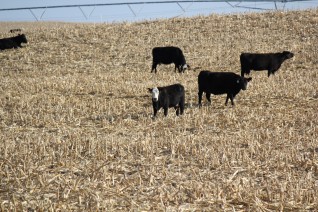Upcoming Events:
Dec. 3:Landlord/Tenant Workshop, (Reg. 9:15) Program 9:30 a.m.-3 p.m., Divots Convention Center, Norfolk, 402-370-4040
Dec. 4-6:Nebraska Power Farming Show, Lancaster Event Center, Lincoln
Dec. 6: LBNRD Operator Training, 9 a.m., 4-H Bldg, Fairbury
Dec. 6: Prescribed Burning Workshop, Holiday Inn, Kearney, www.nefirecouncil.org
Dec. 6: TAPS Banquet, 5-7 p.m., North Platte
Dec. 6-7:Ag Update Meeting, Holiday Inn Southwest, Lincoln
Dec. 10-11: Growth and Risk Workshops, North Platte, RSVP & Info: 308-696-6734
Dec. 12-13: Growth & Risk Workshops, Norfolk, RSVP & Info: 308-696-6734
Dec. 12: UBBNRD Project Grow Workshop, 9 a.m.-3 p.m., Holthus Convention Center, York, RSVP 402-362-6601
Dec. 12:Landlord/Tenant Workshop, (Reg. 9:15) Program 9:30 a.m.-3 p.m., Harlan Co. Extension Office, Alma, 308-928-2119
Dec. 13: Nebraska Soybean Day and Machinery Expo, 8:30 a.m.-2:30 p.m., Saunders Co. Fairgrounds, Wahoo
Dec. 13: LBNRD Operator Training, 9 a.m., Community Bldg, Deshler
Dec. 14:Landlord/Tenant Workshop, (Reg. 9:15) Program 9:30 a.m.-3 p.m., Dawson Co. Extension Office, Lexington, 308-324-
Dec. 17: Crop Science Investigation (CSI): Ag Industry Tour, 5-6 p.m. RSVP jrees2@unl.edu
Dec. 17: Confronting Crop Challenges, 9-Noon, Nielsen Community Center, West Point
Dec. 17:Confronting Crop Challenges, 1-4 p.m., Community Center, Pender
Dec. 18: Confronting Crop Challenges, 1-4 p.m., Club Room at Ag Park, Columbus
Dec. 19: Confronting Crop Challenges, 1-4 p.m., Extension Office, Norfolk
Dec. 19:Landlord/Tenant Workshop, (Reg. 9:15) Program 9:30 a.m.-3 p.m., Gage Co. Extension Office, Beatrice, 402-233-1384
Dec. 20:Confronting Crop Challenges, 1-4 p.m., Public Library, Blair
Dec. 20:Landlord/Tenant Workshop, (Reg. 9:15) Program 9:30 a.m.-3 p.m., Adams Co. Fairgrounds, Hastings, 402-461-7209.
Dec. 20: LBNRD Operator Training, 9 a.m., Fairgrounds, Hastings
Part 2 of my residue management series focuses on grazing corn residue. We’re blessed  in Nebraska to have corn, cattle, and ethanol with the distiller’s co-product…the golden triangle as it’s been dubbed. What’s interesting is that a huge feed resource in corn residue is under-utilized each year, with an estimated 52% of our state-wide corn residue being grazed or mechanically harvested.
in Nebraska to have corn, cattle, and ethanol with the distiller’s co-product…the golden triangle as it’s been dubbed. What’s interesting is that a huge feed resource in corn residue is under-utilized each year, with an estimated 52% of our state-wide corn residue being grazed or mechanically harvested.
Because a small amount of residue is removed, many fields in Nebraska have potential for grazing, except for the case of extreme slope and/or very low yields. Regarding stocking rates, Dr. Mary Drewnoski, Extension Beef Nutritionist shares, “Corn residue is about 10% husk and 34% leaf with the remaining residue being stalk and cob. Recommended stocking rates are based on the ability of a pregnant cow to maintain body weight without supplementation of protein or energy. The rates suggest that you can graze a 1200 lb cow for 30 days for every 100 bu. of corn grain produced. This would result in the cow consuming only about 12% to 15% of the corn residue in the field and nearly all would be husk with some leaf. Cob and stalk have less energy available.”
Compaction is the main concern I hear for not grazing. An increase in a soil’s bulk density and penetration resistance can be indicators of compaction. A summary of Nebraska research studies when corn residue was grazed at proper stocking rates has shown fall and winter grazing:
- do not significantly impact soil properties that would lead to compaction;
- don’t result in changes to soil organic matter, N, P, or K (just uneven distribution of the nutrients excreted back onto the land);
- results in maintained or increased yields; and
- increases soil microbial activity.
Grazing corn residue resulted in no detrimental effects on soil properties (sixteen years in silty clay loam soils) including bulk density and penetration resistance. Increase of surface roughness was observed where cattle congregated for water and during wet conditions when soil was thawed. An Iowa study indicated the surface roughness could impact seed placement for the following no-till crop but only found that in one location in one field studied. In another study of five Eastern Nebraska locations, penetration resistance was slightly increased in two of the locations but was below the threshold for impeding root growth and did not carry over into the next year. There were no yield differences between grazed and ungrazed treatments whether continuous corn (239 bu/ac for grazed and 223 bu/ac for ungrazed) or soybean (grazed 59 bu/ac and ungrazed 62 bu/ac) in the three years at those five locations. Sixteen years of fall grazed corn residue (November to February) resulted in a statistical soybean yield increase of 3.4 bu/ac in Eastern Nebraska. There was also an increase in the soil microbial community in the grazed treatments vs. ungrazed for those sixteen years. Under continuous corn in western Nebraska, five years of fall grazing corn residue did not statistically impact yields (154 bu/ac grazed vs. 148 bu/ac ungrazed).
Some have mentioned that the weather is not allowing them to till this fall. Perhaps cattle grazing is an option? Regarding the questions I’m receiving about this: The tenant in cash rent situation owns the stalks unless the landlord has specified otherwise in the written lease. Specify in the grazing lease who takes care of fence, water, and monitoring cattle. To help connect cattle and crop producers for utilizing residue and forage cover crops for grazing, there’s a free resource called The Crop Residue Exchange at https://cropresidueexchange.unl.edu/. After establishing a log-in account, growers can list cropland available for grazing by drawing out the plot of land available using an interactive map. They can then enter basic information about the type of residue, fencing situation, water availability, and dates available and provide their preferred contact information. Livestock producers can log in and search the database for cropland available for grazing within radius of a given location of interest. There’s also an ‘Other’ category where growers can list forage cover crops for grazing. Grazing rates are listed as either a ‘per acre’ basis or ‘rate/head/day’. An excel spreadsheet called the ‘Cornstalk Grazing Cow-Q-Later’ may be of help to determine rates at this site: https://go.unl.edu/2fb6. There’s more I’d like to share but for additional resources, please see my blog site at: http://jenreesources.com or contact your local Extension Office.
Of importance is to double check in-season and fall-applied herbicide labels for any grazing restrictions. These restrictions can also be found in the ‘Forage Feed Grazing Restrictions’ in the UNL Guide for Weed Management. The forage, feed, and grazing restriction only applies to the crop for which the herbicide was applied. When it comes to grazing cover crops planted into these residues, one must use the replant/rotation restriction guidelines found on the herbicide label and in the UNL Weed Guide: ‘Replant Options Rotation Restrictions’. If the label doesn’t specify any restrictions, then it should be ok. If you want to be on the safe side, a rule of thumb is to use the pre-harvest interval for the amount of time to wait before grazing stalks.



































